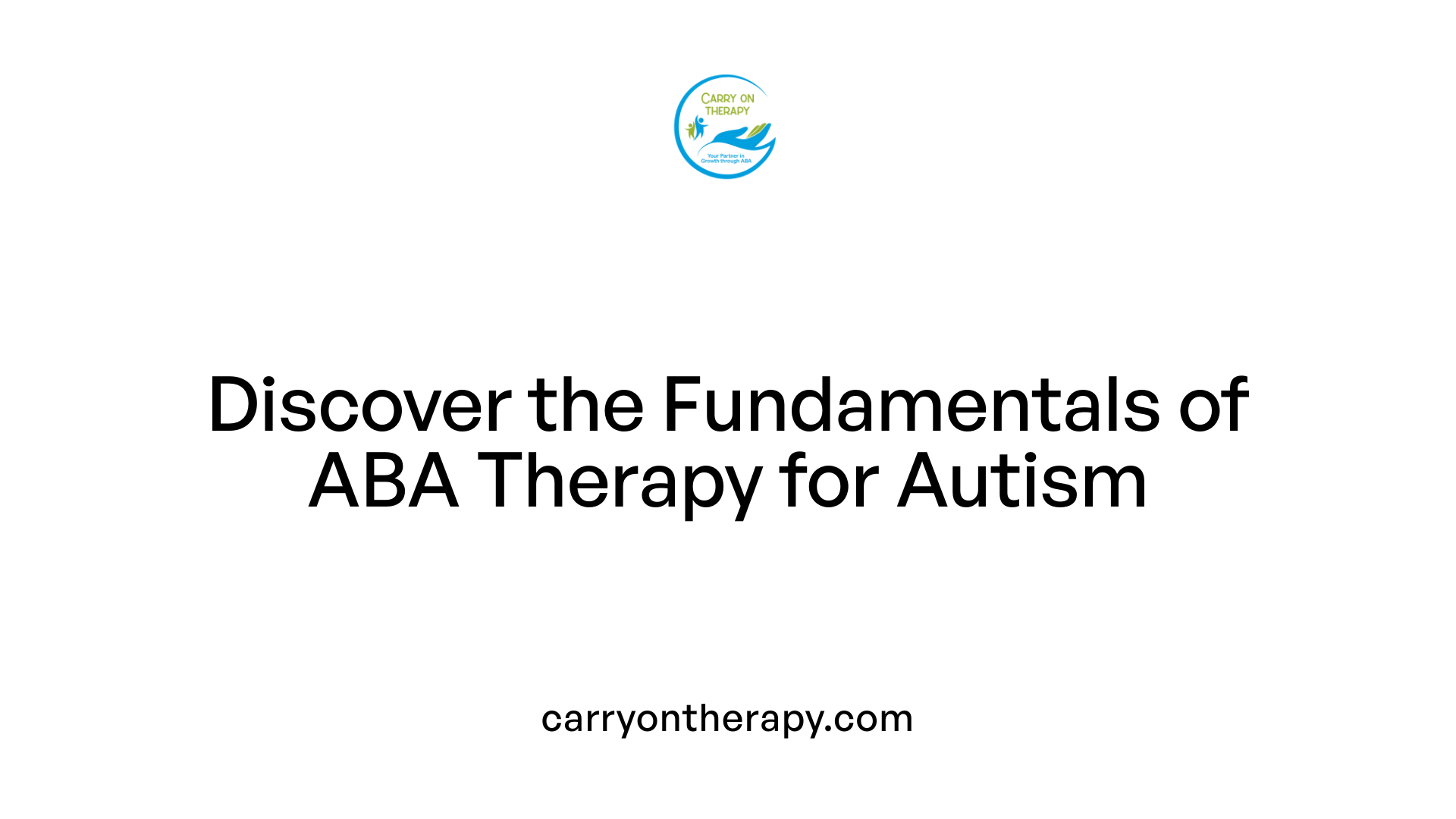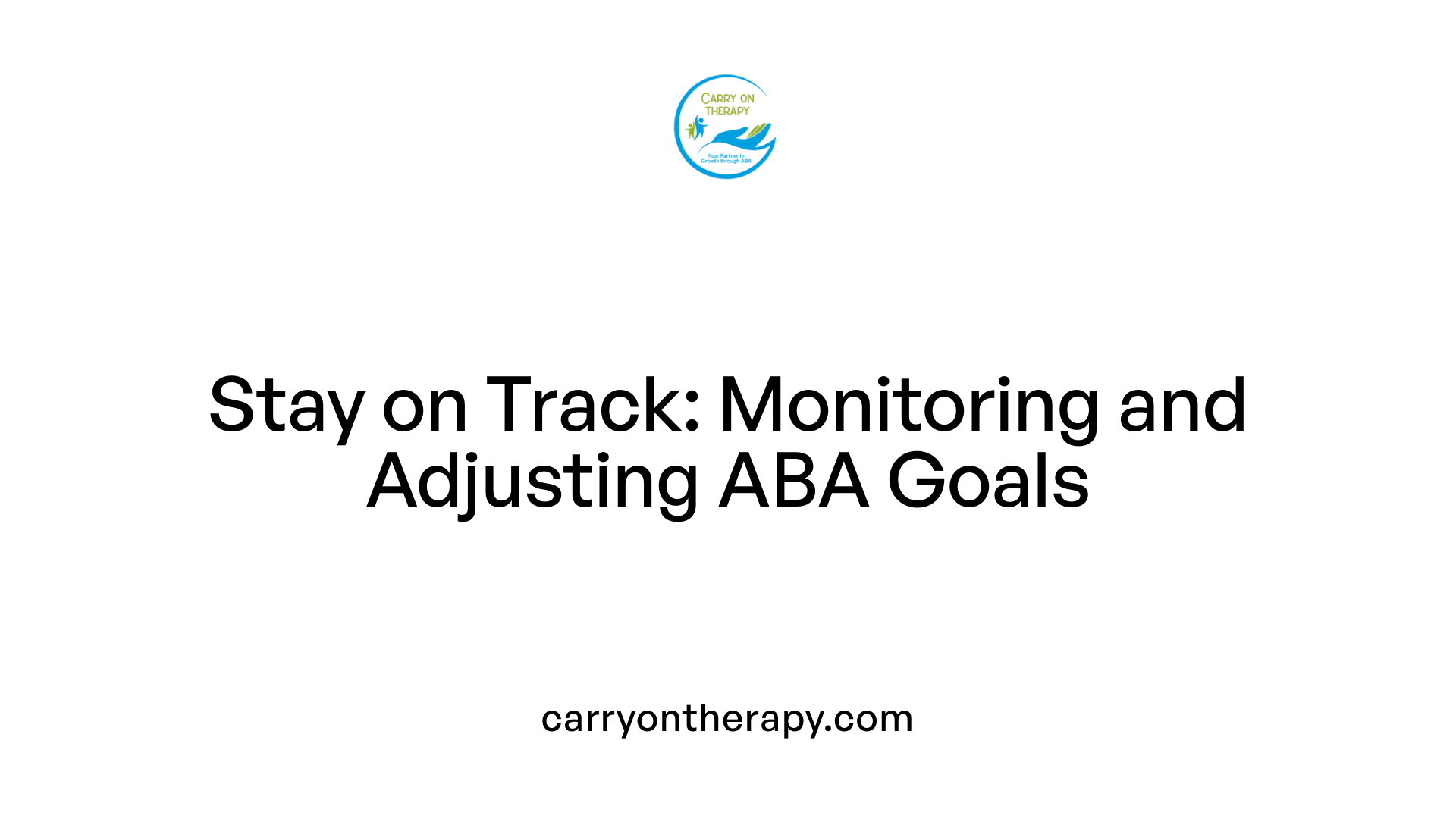Introduction to Collaborating with Your Child's Therapy Team
Effective collaboration with your child's therapy team is fundamental to ensuring the best outcomes in Applied Behavior Analysis (ABA) therapy for autism. Given the complex and individualized nature of therapy, understanding the process, your role, and the strategies employed can empower you to support your child's developmental journey successfully. This article offers practical tips to help you engage proactively with your child’s therapy providers, reinforcing therapeutic gains beyond the clinic or classroom.
Understanding ABA Therapy and Its Role in Autism Treatment

What is Applied Behavior Analysis (ABA) therapy and how is it used for autism?
Applied Behavior Analysis (ABA) therapy is an evidence-based approach used primarily to support children diagnosed with Autism Spectrum Disorder (ASD). It focuses on understanding and modifying behaviors through a cycle of antecedent (what happens before), behavior, and consequence (what happens after) to promote positive skills and reduce challenging behaviors.
How does ABA improve social, communication, and adaptive skills?
ABA therapy uses structured strategies like modeling, prompting, and reinforcement to teach and strengthen essential skills. These include social interaction, communication, self-care, and adaptive behaviors that help children better participate in daily life and future educational settings. Therapists develop personalized plans based on detailed assessments to target the child's unique needs.
In what settings is ABA therapy applied?
ABA strategies are flexible and can be used across various environments such as homes, schools, and clinics. In classrooms, for example, ABA helps improve behaviors, communication, social skills, and learning abilities by employing consistent reinforcement and adjusting the environment to foster motivation and focus.
What are some structured methodologies and goals of ABA?
ABA involves several commonly used techniques including:
- Discrete Trial Teaching (DTT): Breaking skills down into small, manageable steps and teaching each step with clear cues and reinforcements.
- Pivotal Response Treatment (PRT): Focusing on critical areas like motivation and social interaction to unlock improvements in many other skills.
- Token Economy: Using tokens as a form of reward to encourage positive behavior.
- Naturalistic Teaching: Leveraging a child’s interests in everyday routines to promote learning.
- Contingent Observation: A mild timeout that reduces disruptions while allowing the child to observe peers.
The overarching goals of ABA are to increase functional, positive behaviors and reduce negative ones while promoting independence and developmental progress. This is achieved through ongoing data collection and adjustment of therapy strategies to meet each child's evolving needs.
The Importance of Parental Involvement and Collaboration

Role of parents in continuing therapy outside sessions
Parents are essential to the success of Applied Behavior Analysis (ABA) therapy because children spend less than 20% of their week in formal sessions. By continuing the strategies learned during therapy at home and in daily activities, parents help reinforce new skills and behaviors. This ongoing practice ensures that the child’s progress is maintained and generalized beyond the therapy setting.
Collaborative communication with therapists and educators
Effective ABA therapy requires strong collaboration between parents, therapists, and educators. Parents who work closely with therapy staff and understand intervention strategies can better support their child's learning. Communication helps ensure that the techniques used are consistent across environments like home and school, promoting smoother skill generalization.
Emotional stability and self-care for parents influencing therapy success
A parent's emotional health greatly affects their child’s progress in therapy. Parents with higher emotional stability are more capable of maintaining consistent therapeutic strategies throughout the week. Prioritizing self-care and managing emotional needs enable parents to participate actively and adhere to therapy plans, which in turn improves outcomes for the child.
How parents can support the generalization of skills in daily life
Parents can foster the generalization of skills by incorporating learned behaviors into everyday routines and using natural reinforcements based on their child's interests. This approach helps children apply new skills in real-life situations, such as communication, social interactions, and self-care. By modeling and encouraging positive behaviors regularly, parents ensure that what is taught in therapy transfers effectively to daily living.
Benefits of behavioral therapy for autism
Behavioral therapy, including ABA, improves communication, social skills, and daily living abilities by reinforcing positive behaviors and reducing challenges. Early and intensive involvement leads to significant development gains. Parent involvement enhances therapy success by extending learning across multiple settings through collaboration and consistent reinforcement.
Choosing and Working With Qualified ABA Therapy Providers

Who provides ABA therapy for individuals with autism?
ABA therapy is typically delivered by a multidisciplinary team that includes Board Certified Behavior Analysts (BCBAs), Registered Behavior Technicians (RBTs), and other trained specialists. These professionals work for organizations offering autism services across various settings. For example, in Louisiana, the LEARN organization provides ABA therapy through locations in Baton Rouge, New Orleans, Covington, and Slidell. Their team develops and oversees personalized treatment plans utilizing evidence-based ABA methods.
What criteria should be used to select qualified ABA therapists?
Selecting a qualified ABA therapist involves considering credentials, experience, and approach to treatment. A BCBA certification is a recognized standard indicating specialized expertise in applied behavior analysis. It is important to choose providers who conduct individualized assessments and create tailored treatment plans based on the child's unique strengths and challenges. Additionally, the therapist’s ability to collaborate with families and educators enhances consistency and therapy outcomes.
What are the varieties of service delivery settings?
ABA therapy can be delivered in multiple settings:
- Clinic-based therapy: Structured sessions conducted in a clinical environment with specialized equipment.
- Home-based therapy: Interventions integrated into daily routines at the child’s home, facilitating generalization of skills.
- School-based therapy: ABA strategies embedded within the educational environment to improve learning and behavior.
Offering therapy across these settings ensures flexibility and supports consistent progress.
Why is individualized assessment and treatment planning important?
Individualized assessment ensures that the therapy targets the child’s specific developmental needs, abilities, and goals. Personalized treatment plans align ABA techniques such as discrete trial training, pivotal response training, and naturalistic teaching with the child’s interests and daily life. This customization maximizes engagement and promotes skill generalization across environments.
By partnering with qualified professionals, families can access evidence-based ABA therapy designed to effectively support children with autism and related developmental disorders.
Key ABA Strategies and How to Support Them at Home

Common ABA Strategies
Applied Behavior Analysis (ABA) therapy utilizes several effective strategies to support children with autism and other developmental disorders. These include:
- Discrete Trial Teaching (DTT): Breaking skills into smaller, manageable steps using a cue-response-consequence structure.
- Pivotal Response Treatment (PRT): Focuses on motivation and social initiations by engaging the child’s interests.
- Token Economy: Implements a system where tokens are earned and exchanged for rewards, motivating positive behaviors.
- Naturalistic Teaching: Uses everyday routines and the child’s natural interests to encourage communication and learning.
- Contingent Observation: A gentle timeout method that temporarily separates the child while allowing observation, decreasing disruptive behaviors.
How These Techniques Reinforce Learning and Manage Behaviors
Each of these techniques is designed to promote positive behavior and decrease unwanted actions by offering clear structure, motivation, and reinforcement. For example, DTT teaches new skills step-by-step with immediate reinforcement, while PRT leverages natural interests to enhance engagement in real-world social interactions.
Tips for Parents to Reinforce Strategies at Home
Parents play a vital role in the success of ABA therapy by continuing strategies outside of sessions. To support their child:
- Collaborate closely with therapists to understand specific techniques.
- Use consistent prompts and reinforcements aligned with therapy goals.
- Integrate token systems during daily routines to reward desired behaviors.
- Encourage learning through play and natural interactions.
- Apply contingent observation calmly to manage disruptive behaviors without harshness.
Consistency and Adaptation Are Essential
Being consistent with these strategies throughout the week is crucial since children spend limited time in therapy sessions. Adapting techniques to fit the child’s unique interests and ability levels helps maintain motivation and effectiveness. This collaborative, personalized approach helps maximize developmental gains and fosters the child’s generalization of skills to everyday life.
Maintaining Progress Through Regular Communication and Goal Review

Monitoring and tracking the child’s progress collaboratively
Successful ABA therapy relies heavily on regular and transparent monitoring of the child's development. This monitoring is a collaborative effort between parents, therapists, and educators. Progress tracking includes observing the child's responses to different interventions and noting improvements or challenges in targeted behaviors and skills.
The role of parents in providing feedback and observations
Parents play a vital role by offering continuous feedback and sharing daily observations. Since children spend less than 20% of their time in formal therapy, parents' insights from home and other settings are essential. This information helps the therapy team understand how well the child is generalizing skills and adapting in real-world contexts.
Regularly adjusting goals and treatment plans with the therapy team
ABA therapy is dynamic and individualized. Goals and treatment plans should be reviewed and adjusted regularly in response to the child's progress. This ensures therapy remains aligned with the child's evolving needs, strengths, and challenges. Such adjustments are typically done in collaboration during meetings between parents and the therapy team.
Understanding the significance of data collection and progress measurement to drive therapy decisions
Data collection is a cornerstone of effective ABA therapy. It allows therapists to objectively measure improvements or setbacks in behaviors and skills. By analyzing this data, therapy decisions become evidence-based, helping to optimize interventions and increase the likelihood of meaningful outcomes for the child.
Conclusion: Building a Strong, Collaborative Partnership
Working effectively with your child’s therapy team is a dynamic and ongoing journey that hinges on mutual understanding, open communication, and active participation. By educating yourself about ABA therapy, choosing qualified providers, embracing your vital role in reinforcing strategies at home, and maintaining consistent dialogue about your child's progress, you can help create an environment where your child’s development flourishes. Remember, your involvement not only reinforces therapeutic gains but also empowers your child to generalize skills across their life, paving the way for greater independence and quality of life.
References
- The Parent's Role in ABA Therapy
- How to Use ABA in the Classroom
- Applied Behavior Analysis (ABA)
- Behavioral Management Therapy for Autism | NICHD
- Demystifying Child Autism Therapy: A Parent's Guide to Local ...
- Applied Behavior Analysis (ABA) for Children With Autism
- Applied Behavior Analysis Providers October 2025
- ABA Services
You have to Start to be Great!






